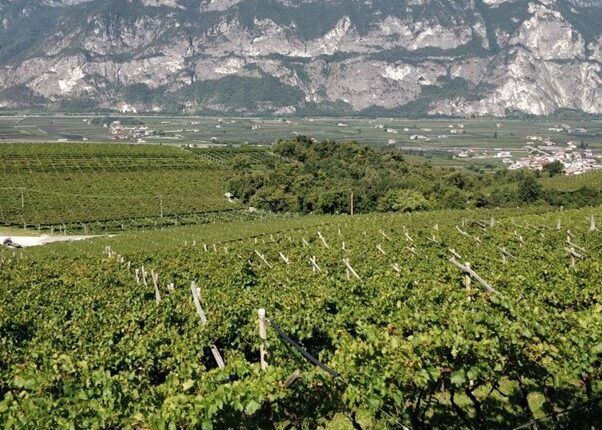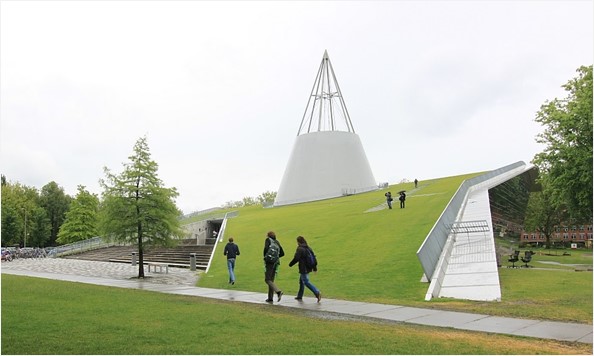19 March 2021
After this long, dark winter, we finally feel spring coming. Strolling along the paths, watching the bulbs bloom and seeing the sparkling green of the new leaves brings us joy and new energy. Nature is finally awakening.
Intensively cultivated farmlands, however, cannot be called “nature”. The hillslopes surrounding the Piana Rotaliana (Trentino, Italy) are rather alike manufacturing sites than natural areas. Characterized by the extensive presence of intensively farmed vineyards, they have severely lost their connection to their former land-use as forest. Today’s vineyards are so close to each other that the slopes look like a vast monocultural field (Fig.1). Indeed, today’s farmers have lost the good habit of using hedges to separate vineyards from each other and the nearby roads.
Hedges were traditionally formed by common shrubs such as hazel, rowan, cornelian cherry, hawthorn and viburnum. Not only they made the landscape more beautiful, but they also protected the vines from pollution and offered shelter to several species of birds, insects and small mammals, which increased local biodiversity and benefited the vines.
A few years ago, some researchers studied the correlation between the presence of birds in vineyards of Trentino and the quality of the agroecosystem where the birds lived. The outcomes showed how the vineyard is positively affected by the presence of biodiversity in the adjacent areas [1]. The preservation of residual natural environments (e.g., woody hedges, forest patches, uncultivated areas, small wetlands) is the factor that majorly affects the bird wellbeing.
Among the most abundant local bird species, we can list the blackbird, the chaffinch, the song thrush, and the goldfinch – all nesting in the vineyards. Other species important for conservation are the wryneck, the common redstart, the flycatcher, the hoopoe and the black bunting – all of them preferring less-intensively cultivated hillslopes.
In Trentino, vineyards and industrial areas are so close to each other that transition zones and ecological corridors are virtually nonexistent. The transition from one area to another is anything but smooth and easy for animals and insects. A possible solution to let them roam freely without encountering artificial obstacles and being killed is urban greening: a urban design approach to increase greenery in urban and industrial areas.
Green roofs are one the most appreciated urban greening strategy, commonly used to contrast the “heat island” effect, which is the excessive accumulation of summer heat by certain urban buildings. In practical terms, the phenomenon is translated into a higher building energy consumption and maintenance cost, and a lower quality of life compared to other urban areas. By mitigating temperature changes both in summer and winter, green roofs are excellent means to oppose the “heat island” effect and allow significant energy savings. If a variety of species is included, green roofs can help local bird species and biodiversity, and reduce air and noise pollution. Finally, they can also become spaces for social aggregation and human wellbeing (Fig. 2).
Recently, a green roofs designing project was opened by the Institute for Renewable Energy of the Eurac Research Center [2]. The project aims to create new green roofs in the southern industrial area of Bolzano/Bozen, which is particularly affected by the “heat island” effect in summertime.
Let us keep on supporting projects like this one to create more buffer and transition zones both in our urban areas and farmlands.
Bibliography
[1] Assandri, Giacomo & Ghidoni, Franca & Penner, Francesco & Bottura, M & Brambilla, Mattia & Bogliani, Giuseppe & Pedrini, Paolo. 2017. Importanza degli uccelli per la biodiversità del vigneto. Viti e Vino, supplemento a L’Informatore Agrario. 27. 19-22.
[2] Eurac Research, 2020. Tetti verdi per Bolzano sud [WWW Document]. URL http://www.eurac.edu/en/research/technologies/renewableenergy/newsandmedia/Pages/newsdetails.aspx?entryid=135488 (accessed 3.19.21).






